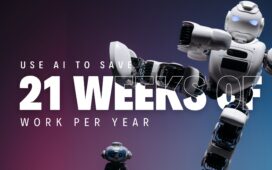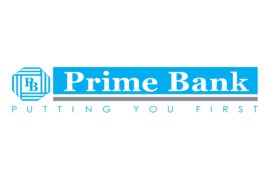LAS VEGAS, NEVADA – JANUARY 08: A display highlights Mobileye’s autonomous driving technology at CES … [+]
Mobileye started a computer vision revolution in 1999 when Amnon Shashua, a leading AI researcher at Hebrew University, founded the company to focus on camera-based perception for ADAS (Advanced Driver Assistance Systems) and autonomous vehicles (AV). The company filed for an IPO in 2014 and was acquired by Intel
INTC
Mobileye had revenues of $1.4B/year and losses of $75M in 2021. These are for ADAS-based computer vision capabilities utilized by 50 automotive OEMs across 800 car models. In the future, they intend to lead in L4 vehicle autonomy (no driver required in certain weather conditions and geographies) using computer vision and 3D imaging LiDAR capabilities based on Intel’s silicon photonics platform. Mobileye’s valuation is projected to be between $30-50B when they finally go public. It is easy to foresee that with these revenues, automotive penetration success, and Intel’s semiconductor prowess, Mobileye will dominate the autonomous vehicle landscape in the coming years.
How will other technology companies with minimal or no revenues compete in the AV space going forward? Cruise (a division of General Motors
GM
Cruise has been active in launching robotaxis in San Francisco and intends to penetrate Austin and Phoenix by the end of 2022. The San Francisco experience has been challenging but progressing. With the backing of General Motors and investments from Microsoft
MSFT
Figure 1: The interior of the new Cruise Origin fully autonomous passenger vehicle in San Francisco, … [+]
Aurora is an AV company founded by the royalty of the AV innovation space (ex-Google
GOOG
TSLA
AMZN
06 January 2022, US, Las Vegas: Robotic truck company Aurora shows off a self-driving semi-truck at … [+]
Waymo (an Alphabet special bets unit) is a pioneer in the autonomy space with a valuation of $175B in 2018, which dropped significantly to $30B by 2020 when new investments of $2.5B from non-Alphabet investors materialized. It was the first to run autonomous, revenue-generating L4 taxi services in multiple Arizona cities and has expanded to other geographies like San Francisco. They claim that their computers are safer drivers than humans. Their revenues are not public but probably inconsequential. Alphabet encouraged the external funding, presumably to get external validation of Waymo’s business prospects and the risks related to delayed timelines for universal L4 ridesharing services. Alphabet’s interests in Waymo may involve more than the movement of goods and people. Advertising and search matter; capturing eyeballs and generating advertising revenues from a captive audience in an AV are probably more interesting. Given this, Waymo may have more runway than other AV companies that rely solely on transportation revenues.
Figure 2: A Lexus brand SUV – which was modified by the Google sister company Waymo to become a … [+]
Argo.ai was founded by ex-Google and Uber alums. They recently announced deployments of AV taxis in multiple locations (Miami, Austin). These are in concert with Lyft
LYFT
Figure 3: Florida, Miami Beach, ARGO self driving test vehicle by Ford. (Photo by: Jeffrey … [+]
Zoox was focused on AV ride-sharing until Amazon acquired it in 2020. It had raised ~$1B since its founding in 2016. It is unclear whether this opportunity is interesting for Amazon – the technology is probably better utilized for trucking and last-mile delivery capabilities. Zoox invested in purpose-built ride-hailing taxis with significant innovations – like side parking cars and cabin designs promoting a home-like environment.
Figure 4: Engineers work on a Zoox Inc., autonomous vehicle at the company’s manufacturing facility … [+]
But designing and manufacturing cars and offering L4 ride-hailing services requires a lot of investment. With essentially no revenues and a significant reduction in private investment interest, it is unsurprising that Zoox sold itself to Amazon for ~1B, equal to prior investments and close to a fire sale. It is unclear how they will monetize and become profitable in the future. But Amazon is a magician.
Mobileye has laid down the gauntlet. They generate significant revenues with ADAS now and are almost profitable. They will progress in L4 autonomy (for ride-hailing and consumer cars) with their automotive experience and Intel’s silicon photonics-based LiDAR and compute capabilities. Cruise is probably best positioned to compete, given the backing of its parent, General Motors and its progress along the L4 taxi services front. Waymo can probably afford this with additional investments and using the L4 taxi service as a channel to generate lucrative advertising revenues. Argo, like Cruise, can rely on Ford and Volkswagen to expand their offerings beyond L4 taxi services to consumer cars. Aurora probably has to consider being acquired, as they seem to have acknowledged. Zoox may have to pivot to support Amazon’s core business of moving goods from warehouses and suppliers to your door.
I had predicted a year ago that the LiDAR space would have to consolidate, given the number of players, the investments, the revenue push-outs and limited revenue opportunities. It has proven to be accurate. A similar phenomenon will occur in the autonomy space. There is insufficient revenue, cash, investor interest and customers to compete profitably in the L4 ride-sharing area. Extensions of the technology to trucking, ADAS and consumer L4 cars are critical. Alphabet is increasingly worried about boring things like profitability and cash flow and is souring on the whole “other bets” thing. Aurora is realistic and indicated they are looking to be acquired. Argo’s backers (Ford and Volkswagen) have other significant priorities, like exploiting the electric vehicle space and shoring up their semiconductor supply chains. It is unclear whether they have the stamina to continue investing. Given this, Argo’s intent to go public makes sense. General Motors was emphatic about retaining Cruise as part of the company last year when they replaced Cruise CEO Dan Amman, probably because they understood that using the Cruise technology across other General Motors products was a better strategic direction. Waymo just brought a professional financial executive on board to worry about revenues, expenses and investments – which may be a precursor to going public.
Of course, we cannot rule out acquisitions!








